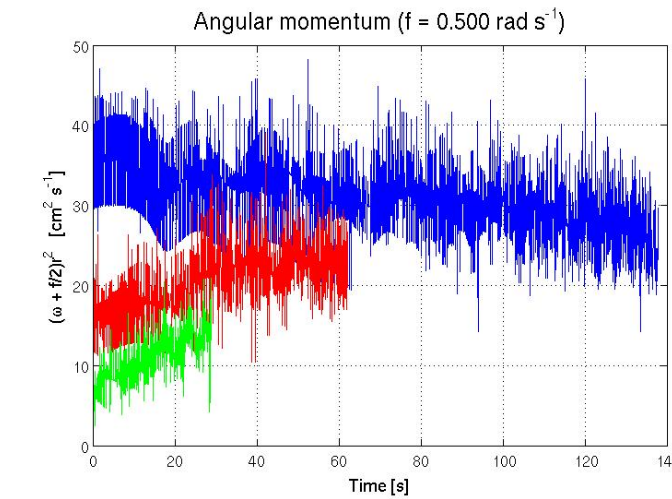This image displays the evolution of (w+f/2)r^2 for an experiment with f = 0.500 rad/s. w is the angular velocity of a particle in the rotating frame of reference, f is the Coriolis parameter, and r is the distance of the particle from the rotation axis. This quantity is proportional to the angular momentum and should remain constant if a) the angular momentum is conserved and b) the particles are in fact tracers of the angular momentum-conserving flow.
Angular momentum conservation is clearly not perfectly satisfied, with two particles
actually increasing their angular momenta for unknown reasons. However, the changes in
angular momentum experienced by an individual particle over the course of the experiment are
generally smaller than the differences in angular momenta between particles. Thus the particles
can be reasonably said to have distinct values of angular momentum.
Contrary to some prior claims, the angular momentum of every water parcel is not equal to the angular momentum of a water parcel with w = 0 located at the outer edge of the water tank. This is because when the experiment begins from solid body rotation, all water parcels have w = 0 but they are not all at the outer edge of the water tank. If the fluid is assumed to be invisicid and axisymmetric, then there is no way to generate torques that
